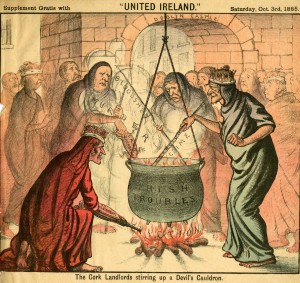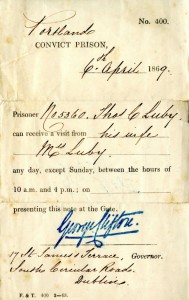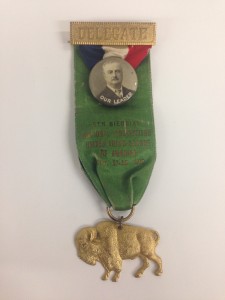
This week’s post is guest authored by Marielle Gage, a CUA graduate student in History.
Saint Patrick’s Day is a beloved holiday, but for many Irish-Americans their heritage intersects with their daily lives more than once a year. Whether you grew up amused or irritated by a certain cereal leprechaun, or found that friend who couldn’t tell the difference between a Mc- and a Mac- adorable or infuriating, life as an American of Irish descent is filled with constant awareness. Or, at least, my own has been. I think I knew about the Potato Famine before the American War of Independence, and I still have an instinctive, furious reaction if anyone ever dare suggest that Oliver Cromwell ever did a good thing in his life.
Interest (as well as pride) in Irish heritage and history is nothing unique or special about me; it has a long and rich tradition in the Irish-American community. Here, at the American Catholic History Research Center and University Archives, we house several historical collections directly dealing with Irish and Irish-American history. A particularly fun collection is the Ancient Order of the Hibernians (founded 1836), but in deference to the 100th anniversary of the Easter Rising, a seminal moment in the march towards an autonomous Irish state, I will direct your attention to our various exhibits in honor of Irish Independence.

First, we have our physical exhibit, organized by our wonderful Katherine Santa Ana, “Sworn to Be Free: Irish Nationalism 1860-1921,” currently on display in the May Gallery of Mullen Library (first floor). The exhibit shows a selection of items from our holdings: letters, Gaelic alphabet cards, political cartoons, photographs, medals, and more. “Sworn to Be Free” looks at the cause of Irish Independence from an American Irish viewpoint: some of our records come from Irish immigrants, but most come from first or second-generation descendants who still maintained keen affection and concern for their motherland. When the struggles for independence became fraught, Irish republicans often looked to their American brethren for material, intellectual, and spiritual support, and the exhibit highlights several Americans offering that support. For those unable to visit “Sworn to Be Free” in person (and if you can, you really should), there is an online version of the exhibit available.

To complement the online exhibit, we are offering a document-based online exhibit, “Exploring Irish Nationalism with ACUA: An Academic Resource”, for use of teachers, students, and the interested public who might wish to explore Irish independence (and CUA’s connection to it) deeper. Offering certain, select examples from the James Aloysius Geary Papers and the Thomas J. Shahan Papers, both housed at ACUA, this second online exhibit is intended to provide background for the Easter Rising and later War of Independence. Included in Geary’s papers, for example, are minutes and publications of The Friends of Irish Freedom, an American group that watched the Rising and subsequent events with great interest. Shahan preserved several issues of the Irish Bulletin, a publication of the Irish State during the war with Great Britain which often dedicated its pages to illustrating the crimes the English had committed against the Irish people. Impartial news it may not be, but they do serve as a reflection of very real opinions and attitudes present both in Ireland and in sympathetic Irish-Americans.
Neither exhibit is — or claims to be — the whole picture of Irish nationalism and Irish-American sympathy with it. But we have tried to highlight interesting individuals, events, and organizations. We hope our exhibits will not be the end of your curiosity, but the beginning.
